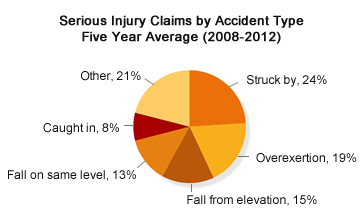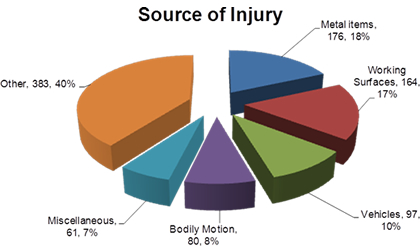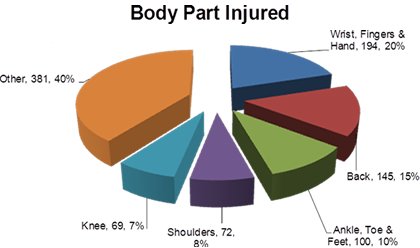With strict OSHA (Occupational Safety and Health Administration) regulations, standardized safety training programs such as SafeLandUSA, and constant on-the-job training and reminders, safety is a buzz word among oil and gas professional.
A wide spectrum of levels and types of safety training are available to oil and gas professionals. Additionally, safety measures in industrial hygiene such as inspections and equipment maintenance ensure a safe working environment.
What Environmental Health and Safety Orientations Accomplish
The mantra, “safety first” drives the booming oil and gas industry, an industry that strives to minimize employee fatalities and injuries. Introductory safety orientations, required by law, train employees to:
- Know what types of additional training they will need in order to work for the various operators at both onshore and offshore facilities.
- Create a mind set that will help them to play an active role in the safety program at their work facility.
- Explain the value of asking questions when they do not understand a certain aspect of their job.
Sobering Statistics
Oil and gas safety orientation programs focus on preventing bodily harm of oil and gas professionals from dangerous job environments by increasing awareness of a variety of hazards. The chart below shows the causes of serious injuries from 2008-2012 in the oil and gas industry.
The chart shows that 79% of injuries are caused by mistakes in physically dangerous environments. The remaining 21% however are associated with other injuries, such as internal organ damage, pulmonary issues, etc. An even larger statistic of “other” was the cause of fatalities between 2008 and 2012.
The two charts above, released by WorkSafeBC, indicate that nearly half of the fatal injuries at oil and gas drilling sites occur from internal injuries, or injuries other than blunt force trauma and those to appendages and joints. In other words, a large percentage of injuries come from unexpected sources for a highly physical environment full of daily interaction with heavy machinery.
But such injuries and fatalities can be prevented with additional oil and gas safety measures beyond to safety orientations and refresher training. Going beyond basic environmental health and safety training, industrial hygiene services ensure that oil and gas safety measures are in place for a variety of highly specific and detailed areas of concern.
How Industrial Hygiene Programs Raise and Heighten Safety Awareness
At SRP Environmental of Shreveport, LA, we define Industrial Hygiene as the “science and art devoted to the anticipation, recognition, evaluation and control of those environmental factors or stresses arising in or from the workplace, which may cause sickness, impaired health and well-being, or significant discomfort among workers or among citizens of the community.”
1. Initial Worksite Analysis – The first step towards industrial hygiene is identifying potential problems and risks in existing equipment, infrastructures, and policies. After an industrial hygienist identifies risk factors, corrective measures can be taken or put in place.
2. Program Review – Corrective measures for risks from possible chemical exposure to high noise levels to dangerous gas emissions are developed by specialists along with plans to implement them. Education can be provided to both employers and employees to raise awareness of the hazard and new policies or procedures.
3. Exposure Monitoring – Chemicals and physical hazards such as hydrogen sulfide, benzene, and gas emissions as well as noise levelsproduced by machinery are measured and monitored by industrial hygienists to ensure compliance with oil and gas safety regulations. Like the initial worksite analysis, potential risks are identified, and using equipment to measure gas, heat, noise, and sound levels the specialist will carefully assess the safety of the workplace and decide if any changes need to be made.
4. Controls – Once a risk is detected, it must be prevented or controlled. OSHA (the Occupational Safety and Health Administration) detailsthree types of controls:
a. Engineering – OSHA claims this is the first and best line of defense against safety risks and hazards in that “to the extent feasible, the work environment and the job itself should be designed to eliminate hazards or reduce exposure to hazards.” Engineering controls in response to oil and gas hazards occur in the form of removal, enclosure, or establishing barriers and/or ventiliation.
b. Work Practice – OSHA notes that even if engineering controls are in place, exposure can still occur due to maintenance requirements or human error. A variety of training programs are available for best practices ranging from respiratory protection laboratory chemical hygiene.
c. Administrative – OSHA defines administrative controls as “other measures aimed at reducing employee exposure to hazards. These measures include additional relief workers, exercise breaks and rotation of workers. These types of controls are normally used in conjunction with other controls that more directly prevent or control exposure to the hazard.”
At SRP Environmental, we are committed to providing our clients with unparalleled, cost-effective services by combining ethical business practices with our passion for quality. Please visit our information page for details of specific industrial hygiene services or contact us for more information on how our oil and gas clients benefits from our services.




 ">
">
 ">
">